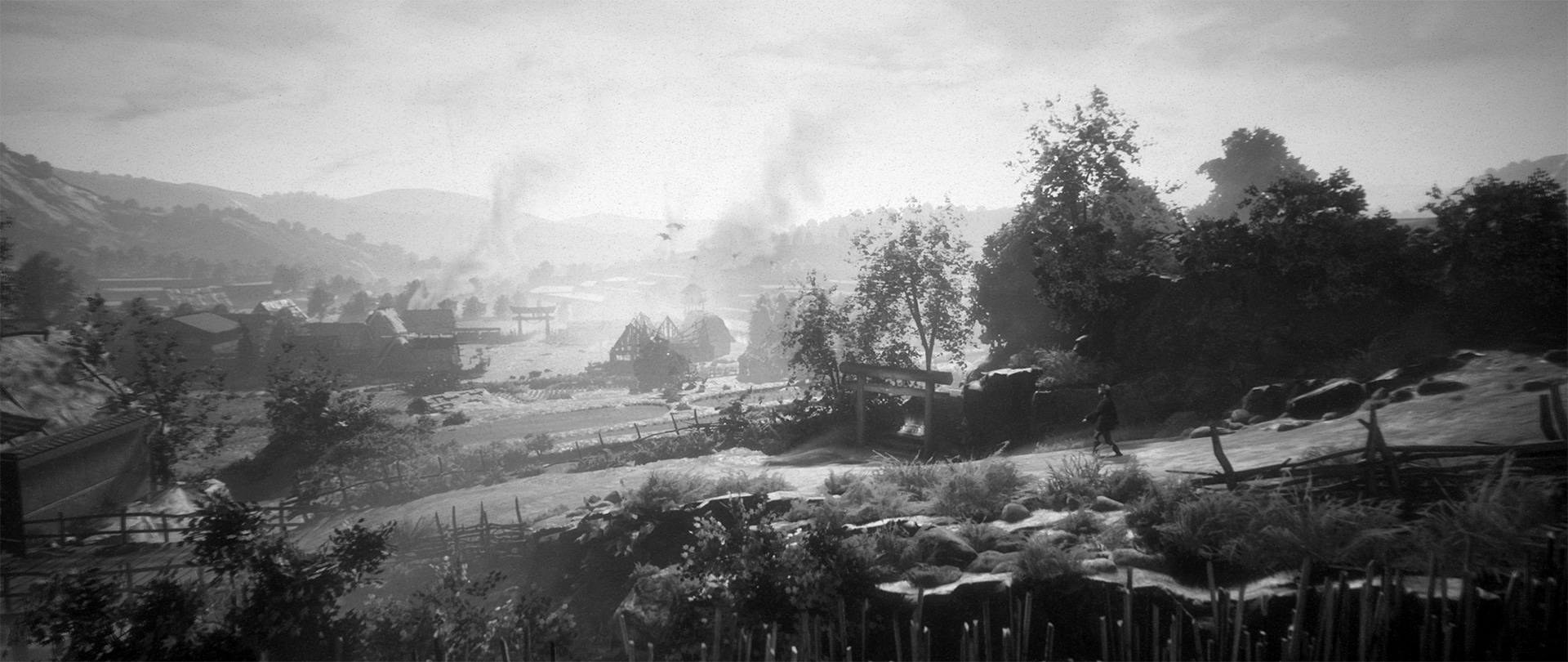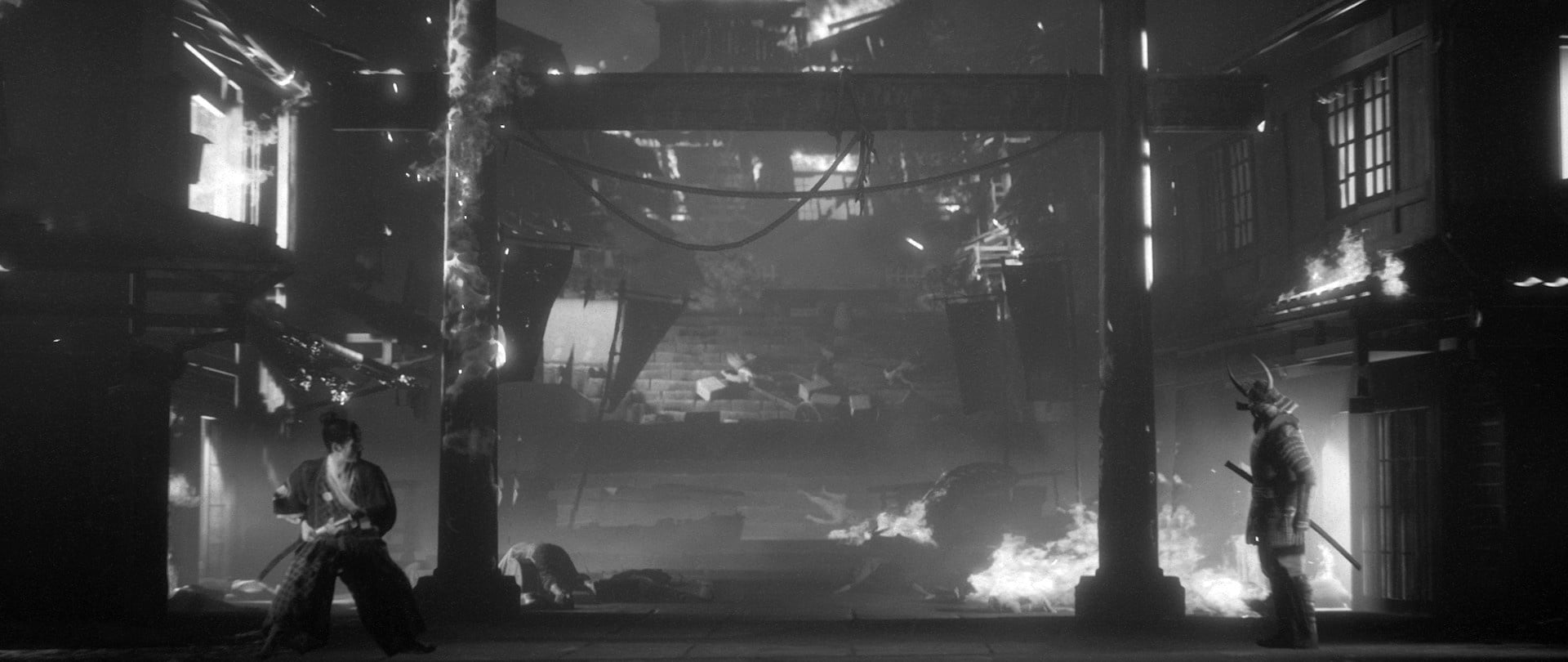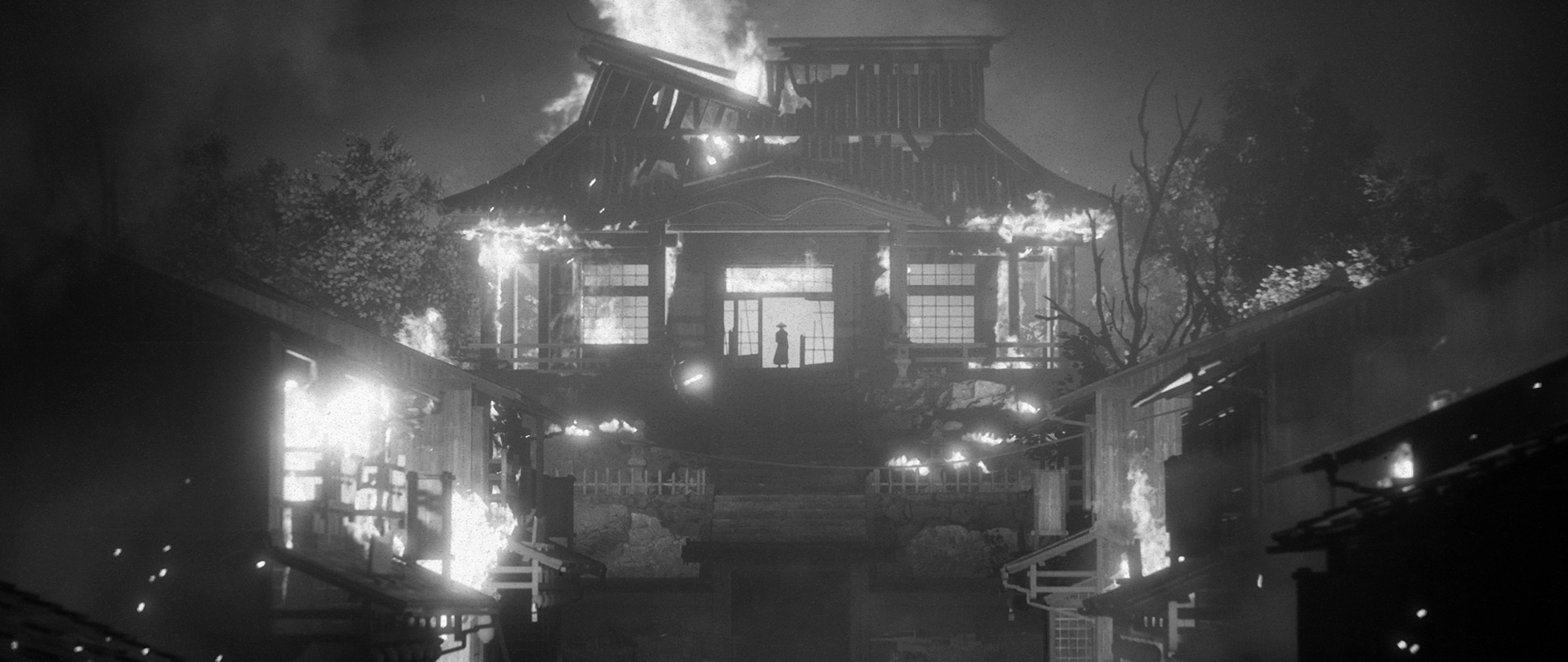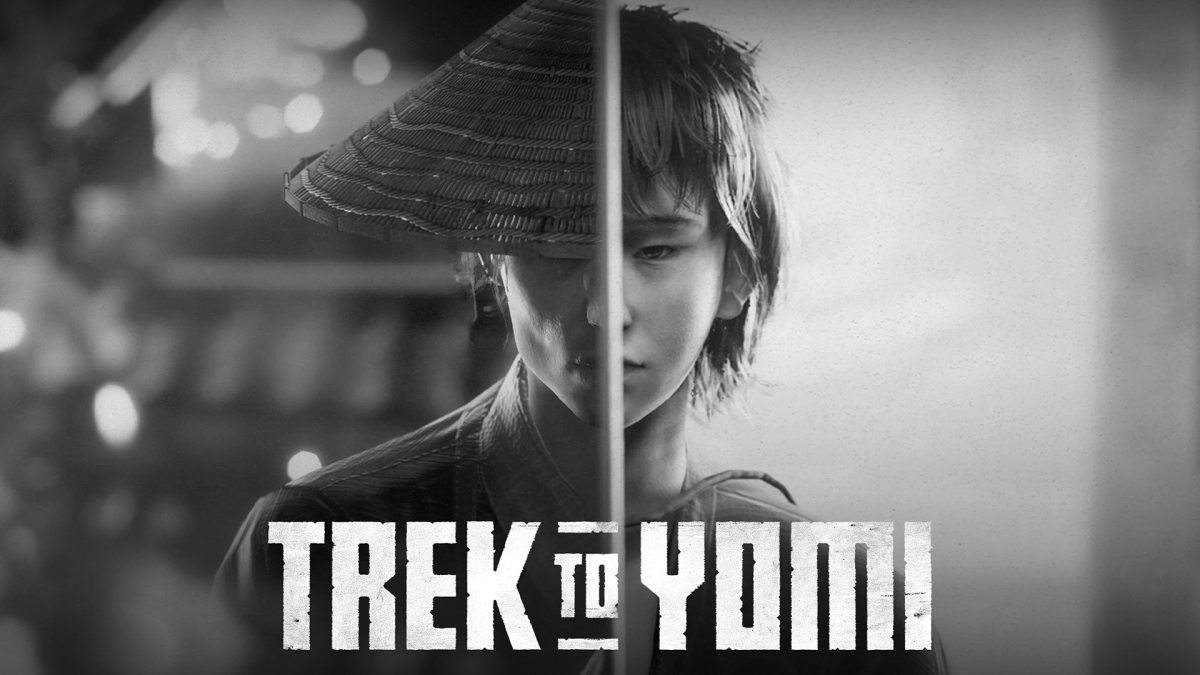Let’s be honest — walking usually sucks in games. Outside of so-called walking simulators and the rare gem like Death Stranding, it’s an almost pointless inclusion. It mostly just gets in the way. That attitude is so embedded in the way I play games that Trek to Yomi tripped me up. You can run instead of walk in this Japanese folklore-inspired action adventure, but doing so feels like a betrayal. That’s because Trek to Yomi feels intensely deliberate in its design.
Convincing an observer that everything they experience in a work of art has a purpose is challenging. It requires a creator to focus pointedly on mood and meaning, even perhaps at the expense of enjoyment or escapism. In the dizzying tens of thousands of words of a novel, it’s difficult to maintain that focus. The same is true with an amorphous superhero film or rom-com aimed at mainstream audiences, or a game story set within an open-world sprawl.
Yet Trek to Yomi is a sterling example of maintaining that focus, and it pays off for the player’s immersion. Its hyper-linear nature is nothing new, but the sense of profundity — real or imagined — sets it apart. It’s the only game I have ever played where walking feels like the appropriate default way to explore. I have not felt that way even about titles like The Last of Us, Ico, or A Plague Tale: Innocence.
A part of it is simply that those games provide different kinds of experiences: adventure novels to Trek to Yomi’s introspective short story. It’s the personal tale of a samurai fighting past the end of all that matters to him. That alone lends it a weight that savior quest narratives don’t share. And while that difference in tone permeates the vibe of the whole game, there’s more behind my preference to walk than just that.

There’s a sense of patience and reflectiveness to the gameplay. It’s there in the opening moments, as you take control of a young Hiroki sparring with his sensei, Sanjuro. The mechanics of the 2D combat are familiar — paced out and methodical. There are echoes of Demon’s Souls, Elden Ring, and the entire pseudo-genre that lies between them. You block, manage stamina, parry, and strike when the opportunity presents itself. The nature of the combat forces you to slow down, and in being offered as your very first interactions with the game, it sets the tenor.
If that were enough, then Elden Ring would bear the same sense of momentousness, but it doesn’t. For all its methodical combat and awe-inspiring landscapes, the second I was free of the tutorial area I was running through the Lands Between, not quite care-free but unweighted by those surrounds.
The difference comes from the cinematic construction of Trek to Yomi. The sparring session is aborted, and Hiroki steps out of the dojo into a village. It’s set dressing. The NPCs have about as much vitality as the background characters from Final Fantasy IV. The magic is in the framing. One or two of the villagers react to Hiroki’s presence, while the framing keeps things moving as you do. There’s the appearance of busyness, which creates the illusion of life. It’s a scene pulled straight from the school of Akira Kurosawa.

The sequence isn’t some hollow homage, though; it stands on its own merits. Hiroki is curious, not concerned. Why run when you can walk? When you can soak up the richness of the atmosphere and feel the place? It’s a village in the most traditional, homely notion — one that convinces because it’s not trying to be everything.
As you walk, the mood changes. Halcyon scenes are disturbed by an undercurrent of fear. That mood is reinforced by the soundtrack. The switch from airy strings to a bassier composition is common, but it works so well. You might start to run as the tension builds, but there’s still no need to race through.
That’s the opening, however. Beginnings are meant to draw you in, set the scene. Think of Alien’s slow, tense panning shots of the Nostromo, Nathan Drake dangling from a train crash in Uncharted 2, Montag setting a house full of books ablaze in Fahrenheit 451. But again, carrying that same sensation through a whole experience is more difficult, especially in games, where so much is left to the player’s control.
That’s where Trek to Yomi really benefits from its cinematic aspirations and old-school design. Like many early adventure games, Trek to Yomi utilizes fixed camera angles. They’re not used here to provide a sense of deific scale, as in the early God of War games. Instead, they reinforce the human scale, the sense that everything we’re passing through is about Hiroki. It uses those carefully orchestrated perspectives not because of technical constraints but for artistic purpose.

This approach means the game can capture, distill, and present that vision of a humble idyll as readily as it can for wide-open spaces and awe-inspiring locales. And Trek to Yomi has no shortage of those. Hiroki’s journey into the Shinto afterlife is set to a range of mesmerizing and ever-evolving backdrops. That sense of wonderment is palpable, but Hiroki is a man on a mission and the game never forgets that.
Perhaps more important to the player experience is that it feels respectful. Most of the collectibles offer insights into culture and beliefs, and the story is delivered with a light touch. There’s rarely more than a few minutes between encounters or other interruptions, keeping the pace tight and ensuring walking is a viable means of traversal because it never drags out. The cutscenes and exposition are just enough to contextualize the events and actions. The meaning of the plague-ridden hamlet or the dragon-wrapped shrine or the gauntlet of villages, the storms, the silences… all of that is on you. Like a Silence or a Skyward Inn, Trek to Yomi shows you the puzzle and invites you to piece it together.
And that’s the thing. Respect begets respect. The clue is in the title: Trek. It’s not a sprint or a marathon. It’s a journey. Odysseus didn’t run to Ithaca. Frodo and Sam didn’t run to Mordor. Dante didn’t run to the heavens. For Hiroki’s journey to have meaning, he can’t run to Yomi. He has to walk, and it is only right that we give that to him.






Published: May 8, 2022 11:00 am